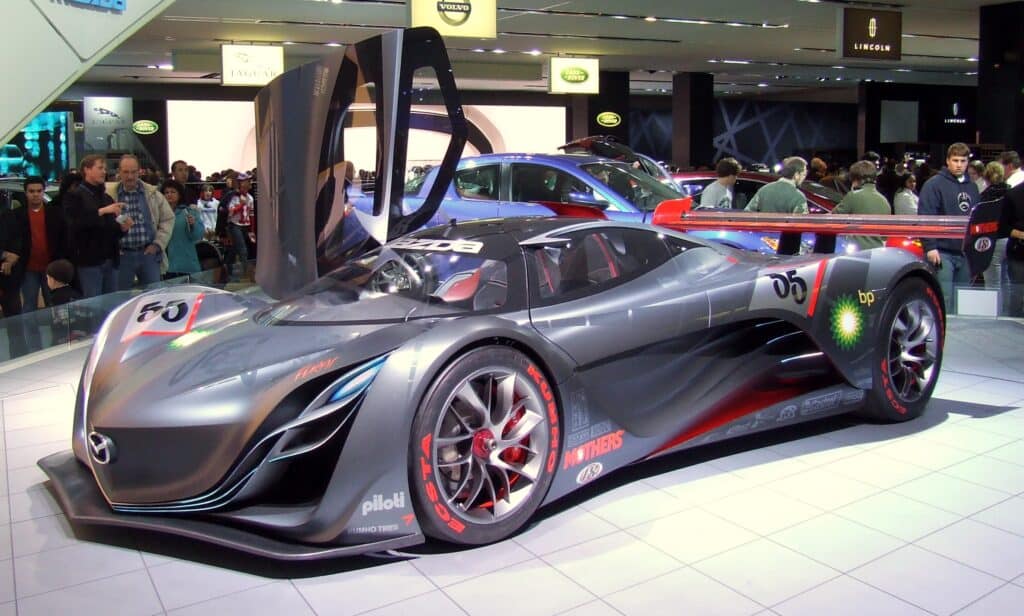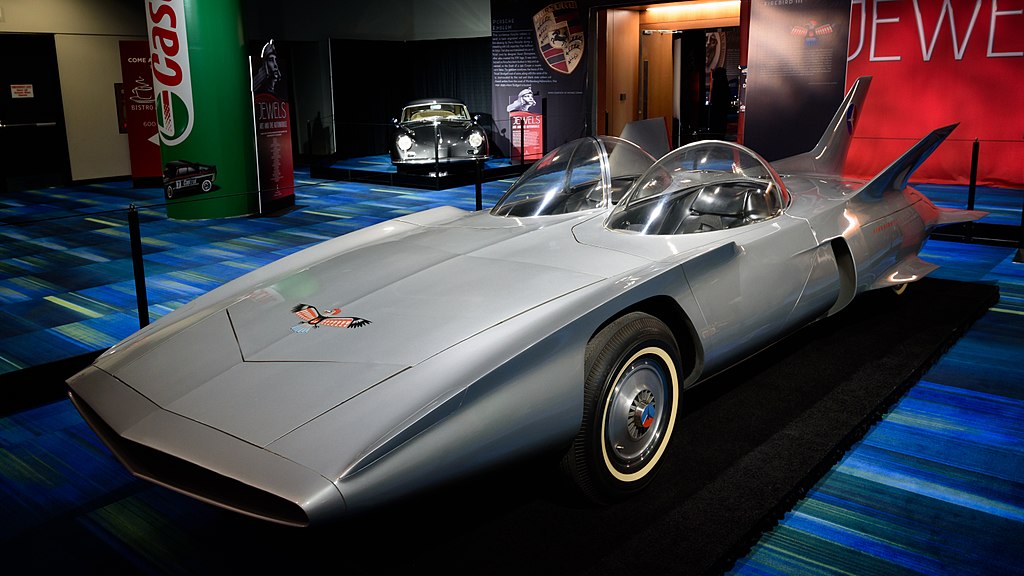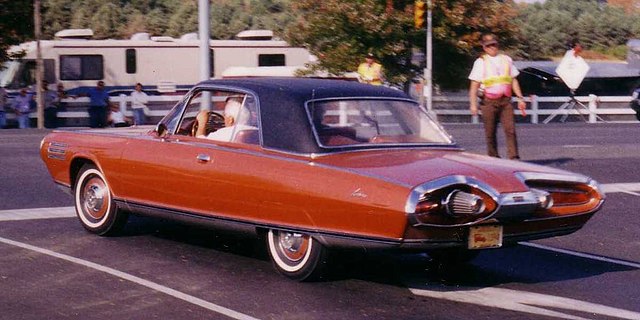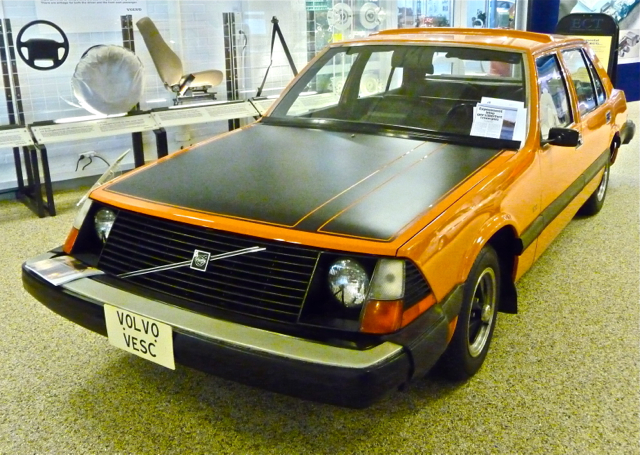Automotive history is filled with bold ideas and innovative designs that never made it to production. These experimental cars served as testbeds for groundbreaking technology, unique aesthetics, and engineering concepts that were often ahead of their time. While many of these vehicles were never meant for mass manufacturing, they left a lasting impact on the industry, influencing future designs and innovations. Here are fascinating examples of experimental cars that showcased the possibilities of automotive ingenuity but never became a reality for consumers.
Cadillac Cyclone

The Cadillac Cyclone, unveiled in 1959, was a futuristic concept car inspired by aerospace design, featuring prominent jet-style engine pods and a bubble canopy. Developed by General Motors under the direction of Harley Earl, it incorporated advanced technologies such as a radar-based crash avoidance system. Despite its innovative features, it was never mass-produced. The high costs associated with its cutting-edge technology and unconventional design elements made it impractical for the consumer market. Additionally, the automotive industry at the time was not ready to adopt such radical changes. The sole prototype now resides in the GM Heritage Collection, serving as a testament to mid-20th-century automotive experimentation. Its influence is evident in later Cadillac designs that embraced futuristic aesthetics. It also highlighted GM’s willingness to experiment with technology far ahead of its time.
Porsche 917/20 “Pink Pig”

The Porsche 917/20, nicknamed the “Pink Pig,” was an experimental racing car developed in 1971 with a unique aerodynamic design and widened bodywork. It was powered by a 4.9-liter flat-12 engine producing around 600 horsepower. Despite its innovative design aimed at improving aerodynamic efficiency, the “Pink Pig” never raced due to handling issues and the team’s focus on other models in the 917 lineup. The car’s unusual appearance, painted in pink with butcher’s cut lines, made it one of the most distinctive Porsche prototypes. Its legacy lives on as a memorable example of Porsche’s experimental approach to racing car design. It has since become a cult favorite among automotive enthusiasts. The design showcased how unconventional ideas could create lasting impressions in motorsport history.
Mercedes-Benz W125 Rekordwagen

In 1938, Mercedes-Benz developed the W125 Rekordwagen, an experimental racing car designed to break speed records. It featured a streamlined body and a supercharged 5.6-liter V12 engine producing around 725 horsepower. It was designed to achieve speeds of over 250 mph, making it one of the fastest cars of its time. Despite its impressive performance potential, it never saw a track in competitive racing due to the outbreak of World War II. It remains a symbol of Mercedes-Benz’s engineering ambition and dedication to motorsport. Its design influenced future developments in high-speed automotive engineering. Today, it serves as a reminder of how historical events can halt even the most ambitious projects.
Mazda Furai

The Mazda Furai, unveiled in 2008, was an experimental concept car that combined striking design with advanced technology. It featured a 20B three-rotor Wankel engine producing around 450 horsepower and ran on E100 ethanol fuel. Despite its impressive specifications and potential as a racing car, it never saw a track in competitive racing. It was primarily intended as a showcase for Mazda’s design and engineering capabilities. Tragically, it was destroyed in a fire during testing in 2008, ending any possibility of further development. It remains a fascinating example of Mazda’s innovative spirit and commitment to pushing the boundaries of automotive design. Its influence can be seen in subsequent Mazda models that embraced bold design elements. It also symbolized a fleeting glimpse of the future for rotary engines in racing.
Ford GT90

In 1995, Ford introduced the GT90, an experimental concept car developed as a modern successor to the legendary GT40. It featured a 6.0-liter quad-turbo V12 engine producing around 720 horsepower and a futuristic design with advanced aerodynamics. Despite its impressive specifications and potential as a racing car, it never saw a track in competitive racing. It was primarily intended as a showcase for Ford’s engineering capabilities and design vision. It remains a fascinating example of what could have been a modern-day Le Mans contender. Its design elements influenced future Ford models, including the 2005 Ford GT. It served as a statement of Ford’s ambition to innovate during the 1990s. It also highlighted a willingness to explore extreme performance and unique design concepts.
Nissan R390 GT1

The Nissan R390 GT1, developed in 1997, was an experimental racing car built to compete in the 24 Hours of Le Mans. Designed to meet homologation requirements, Nissan created a single road-legal version of the R390. Powered by a 3.5-liter twin-turbocharged V8 engine producing over 550 horsepower, the car had the potential to rival other high-performance models of the era. Despite its success on the track, with a third-place finish at Le Mans in 1998, the road-going version never went into full production. Nissan’s decision was influenced by the high costs of manufacturing and limited market demand for such an extreme vehicle. It remains a rare and highly coveted piece of Nissan’s motorsport history. Its aerodynamic design and advanced engineering left a legacy in the development of future high-performance cars. It is often remembered as one of the most iconic endurance racing prototypes.
GM Firebird III

The GM Firebird III, unveiled in 1959, was a space-age concept car designed to explore the possibilities of futuristic transportation. Created by General Motors under the guidance of Harley Earl, the car featured a gas turbine engine, joystick controls instead of a traditional steering wheel, and extensive use of lightweight materials like titanium. It even boasted an autonomous driving system, decades ahead of its time. Despite its innovative features, it was never intended for production, serving purely as a design and technology demonstrator. Practicality and cost were significant barriers to bringing its advanced features to the consumer market. It remains a symbol of the optimistic futurism of the late 1950s. Its radical design and technology influenced GM’s approach to integrating advanced systems into production vehicles. It is now an iconic representation of mid-20th-century automotive experimentation.
Chrysler Turbine Car

In the early 1960s, Chrysler developed the Turbine Car, an experimental vehicle powered by a jet-like gas turbine engine. This sleek, bronze-colored sedan offered smoother performance and reduced maintenance compared to traditional internal combustion engines. Chrysler manufactured 55 prototypes and distributed them to select consumers for real-world testing. However, it never reached production due to high manufacturing costs, poor fuel efficiency, and emissions challenges. The specialized engine required exotic materials, which made scaling production unfeasible for a consumer market. Despite its failure to become mainstream, it remains an iconic experiment in alternative automotive powertrains. Today, a few surviving models are displayed in museums, highlighting Chrysler’s ambitious engineering efforts. It also influenced future research into non-traditional powertrains.
BMW GINA Light Visionary Model

Unveiled in 2008, the BMW GINA Light Visionary Model was an experimental concept car that redefined automotive design with its flexible, fabric-covered body. The GINA (Geometry and Functions in “N” Adaptations) featured a stretchable textile skin over a movable aluminum structure, allowing the car’s shape to change dynamically. It incorporated advanced design concepts like hidden headlights and adjustable body panels that could adapt to driving conditions. Despite its groundbreaking design and potential to influence future automotive materials, it was never intended for production. It served as a platform to explore new ideas in flexibility and sustainability rather than a commercially viable product. It highlighted BMW’s forward-thinking approach to design and innovation. It remains a visionary concept that continues to inspire discussions on alternative materials in automotive engineering.
Volvo VESC (Volvo Experimental Safety Car)

Introduced in 1972, the Volvo VESC was an experimental concept car designed to showcase advanced safety technologies. It featured innovative elements such as energy-absorbing bumpers, crumple zones, three-point seat belts, and airbags—many of which were later adopted in production cars. It also included anti-lock brakes and reinforced cabin structures to protect passengers in the event of a collision. Despite its groundbreaking safety features, it was never intended for mass production. Volvo utilized it as a research platform to test safety technologies that would define the brand’s reputation for safety leadership. The experimental car demonstrated how design and technology could prioritize occupant protection without compromising style. Many of its innovations became standard in Volvo models, influencing global safety standards. Its legacy lives on as a benchmark for safety-focused automotive engineering.
Alfa Romeo BAT (Berlinetta Aerodinamica Tecnica) Concepts

The Alfa Romeo BAT concepts, created in collaboration with Bertone from 1953 to 1955, were a series of experimental vehicles focused on pushing the boundaries of aerodynamics. These striking cars featured dramatic, flowing lines, large tailfins, and a teardrop design that reduced drag to unprecedented levels. Each model—the BAT 5, BAT 7, and BAT 9—was powered by Alfa Romeo’s compact engines, combining futuristic looks with modest performance. These were never intended for production but rather as exercises in aerodynamic efficiency and avant-garde design. Their radical styling was considered too niche for mass-market appeal, and their high production cost would have been prohibitive. However, the BAT concepts heavily influenced future sports car designs and highlighted the potential of aerodynamics in improving performance and efficiency. Today, these vehicles are celebrated as masterpieces of automotive artistry and are sought after by collectors worldwide. The BAT series also underscored Alfa Romeo’s commitment to blending performance with groundbreaking aesthetics.
This article originally appeared on Rarest.org.
More from Rarest.org
16 Unique Marine Creatures Found in the Deepest Oceans

The deep ocean is one of the most mysterious and unexplored places on Earth, home to a fascinating array of marine creatures that have adapted to survive in its extreme conditions. From the eerie glow of bioluminescent fish to the ancient, armor-like shells of deep-sea crabs, these creatures are as unique as they are remarkable. Read More.
15 Majestic Birds of Prey That Inhabit Rugged Mountains

Rugged mountain landscapes are home to some of the most awe-inspiring and powerful birds of prey on the planet. These majestic raptors have evolved to thrive in harsh, high-altitude environments, where their strength, agility, and keen hunting skills are put to the test. Read More.
15 Endangered Species Residing in Hidden Corners of the Earth

In the far reaches of our planet, there are species so rare and elusive that they seem almost mythical. These creatures, often residing in the most remote and hidden corners of the Earth, are also some of the most endangered. Read More.
